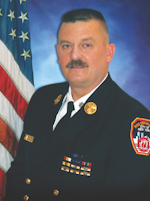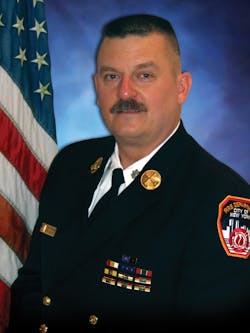Fire departments around the country operate under a variety of command structures. There is no single command structure that will work in every fire department or for every fire company. There is, however, a command concept that many fire departments either ignore or refuse to implement for a number of reasons: a single unit or company commander for every fire department unit. Let’s take a look at the various command structures that exist today in several fire companies.
Two approaches
Consider a volunteer fire department on Long Island, NY, that responds to less than 500 calls per year. There are three separate companies there: Engine 1, Ladder 2 and Engine 3. Each of the three units has the following command structure: the captain, a first lieutenant and a second lieutenant. Each of these three officers is elected by the company membership, and they all perform both administrative work and respond to alarms with the company. The captain, however, is the company commander, meaning they are both the administrative and operational executive of the company. The lieutenants each have administrative responsibilities, which have been assigned to them by, yes, you guessed it, the captain. Each of the three officers is a boss, but company policy, tool usage, office routine, apparatus issues and just about everything else is ultimately decided by the captain. One captain, one company.
Now down the road a few miles is a career fire department that works with three shifts. Each of the five companies in this department has a captain on each shift. This captain is a company officer that handles both administrative and operational responsibilities, just like the captains on the other two shifts. The problem here is that there is no company-wide officer. There is no company commander because each of the three shifts is commanded by officers of the same rank. This often results in each of the three shifts operating like three different fire companies and handling administrative, disciplinary and operational issues their own way. There could not be a more disconnected command structure for a fire department company.
So how do these units coexist in the same firehouse using the same apparatus and tools and facilities? They do it individually and separately, and that is not good. Some companies actually move tools around to different compartments when they are on duty and others change the nozzle on the hosebed to the one they prefer. This is no way to run a fire company, and it is so easily made right.
Obviously, any fire company could simply reorganize the company officer structure and assign a captain and two or three lieutenants to each unit, with the captain designated as the company commander. For departments that do not want to completely reorganize, or for career departments where changing rank designations might be more difficult, there is another method. For a career company with three captains on three shifts, the senior captain (the one with the most seniority in the captain’s rank) could simply be designated as the company commander. So even though each shift is commanded by a captain, the company commander has the final say on company policy, operations, discipline, etc.
Another problem some departments experience without unit commanders is that the next level of command, typically the battalion or district chief, ends up being involved in decisions and issues that should be handled by company officers. Chief officers should not be handling company-level discipline, they should not be involved in how tools or hose or other equipment is stored or carried by companies, and they certainly should not be the people who decide the day-to-day in-house issues that most fire companies experience.
Company-level command
The fire service has had no problem embracing the incident command system for the operational end of our business, but in many cases has fallen far short at the company end of the command structure. Company officers are some of the most important officers in the fire service. The work they do, both at operations and back at the firehouse, is vital. Expecting company officers to handle their duties and provide effective leadership and operations also requires them to have direct company-level command responsibilities as well.

John J. Salka Jr. | Battalion Chief
JOHN J. SALKA JR., who is a Firehouse contributing editor, retired as a battalion chief with FDNY, serving as commander of the 18th battalion in the Bronx. Salka has instructed at several FDNY training programs, including the department’s Probationary Firefighters School, Captains Management Program and Battalion Chiefs Command Course. He conducts training programs at national and local conferences and has been recognized for his firefighter survival course, “Get Out Alive.” Salka co-authored the FDNY Engine Company Operations manual and wrote the book "First In, Last Out–Leadership Lessons From the New York Fire Department." He also operates Fire Command Training, which is a New York-based fire service training and consulting firm.






